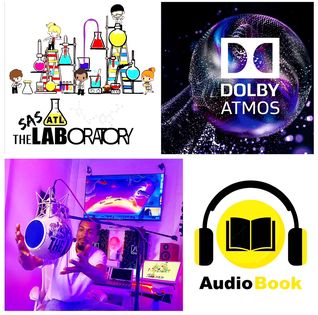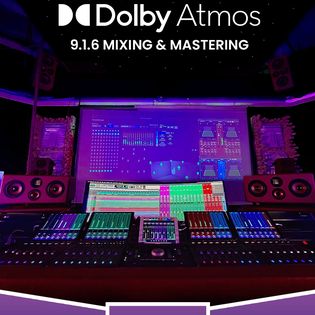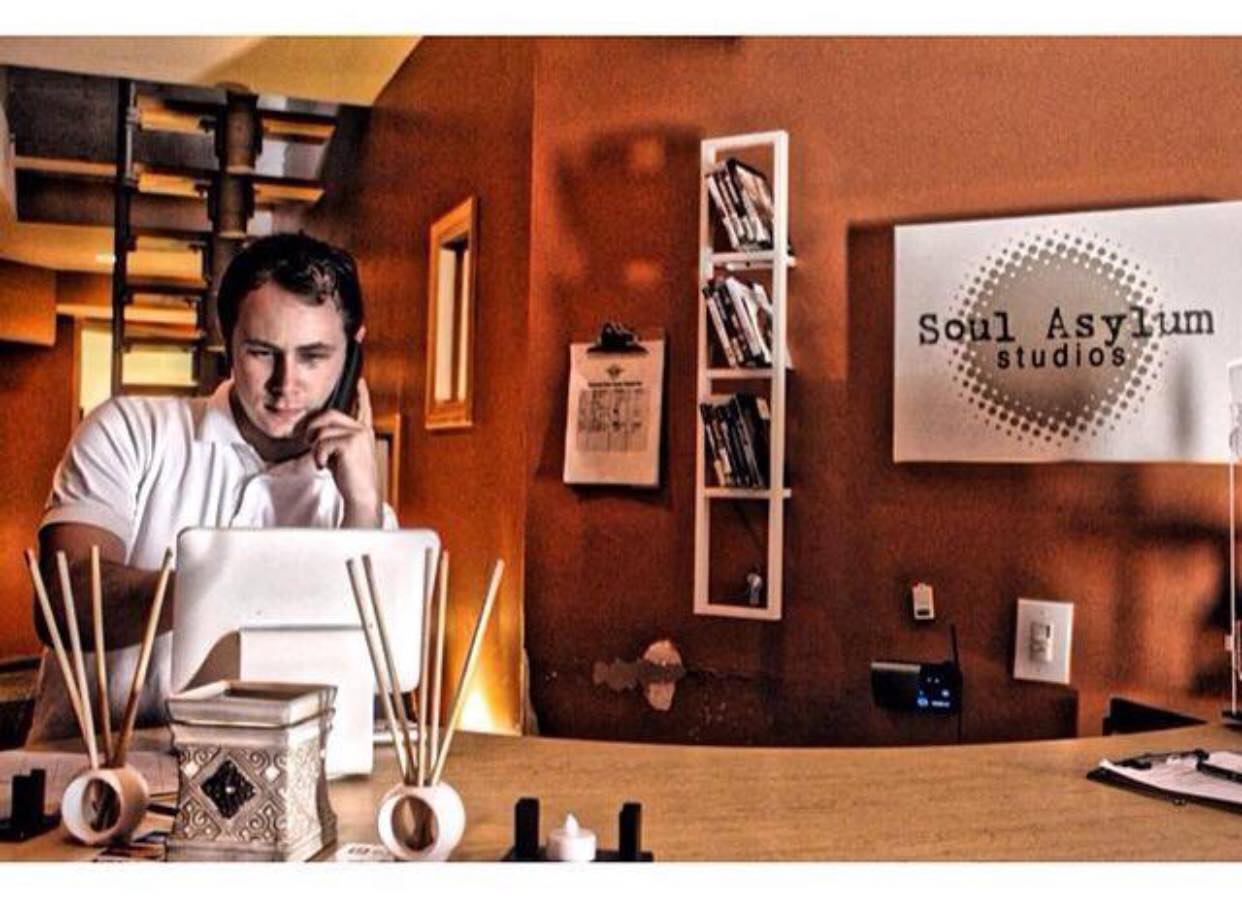The audio Industry is into immersive technology. The 3-D screen was surely not enough when you’re more into audio experiences. Dolby, though came into the early 90’s, became a sensation in recent years. The reason for such a long delay was technological as the world’s theatres were not optimised for Dolby. We can’t forget about the cost of Dolby Atmos tech too.
Not too late, Apple introduced an immersive sound software- ‘Spatial Audio’. They said that it was to compliment the Dolby and make it more experiential for the audience.
Let’s dive deep into the journey of Dolby Atmos and Spatial Audio together and see how they are changing the audio Experience for us forever.
Dolby Atmos and Spatial Audio- A Short Introduction:
Oh, we have talked a lot about Dolby Atmos. But for all of you who have come on our for the first time, let’s discuss it once more. And if you’re a regular reader, you may move to another point.
Dolby Technology uses several surround speakers to create an object-oriented sound experience. Before we move to the next, what is the object-oriented sound experience? Such audio treats all the sound elements with equality and uses each element to create a hyper-realistic experience for users.
Spatial Audio, on the other hand, is used only for people who use iPhones and iPads. It senses the head movement of users and manipulates the audio distribution such that the user always feels the audio coming from the device only.
Dolby uses several sets of speaker configurations whereas Spatial audio uses sensors to sense the motion of the head.
( Also Read More – Best Practices to Set Dolby Atmos Mixing Speaker )
Evolution of Spatial Audio:
1. The idea of Spatial Audio came in the 1930s when monographic audio was the dominating player. The idea was to use two different microphones to create a more empathetic experience of audio.
2. In the 1970s, surround sound started to evolve with technologies like Dolby Stereo and DTS. This gave Spatial tremendous growth with multiple audio channels.
3. In 1970 and 1990, Spatial audio found better scope for its uses but the real revolution came in 2012 when Dolby Atmos introduced object-based sound technology.
4. The year 2018 became the year of 360° audio experiences which were more dynamic, personal, and interactive.
5. 2020 became the year when streaming services like Apple Music and Amazon Music utilised spatial tech for their mainstream media delivery.
( Read More – How You Can Create Your Own Dolby Atmos Sound? )
Key Components of Dolby Atmos and How It Works?

Dolby Atmos includes several speakers to create surround sound with object-based technology. This creates a simulation of audio closer to reality. How does this work? The magic of Dolby Atmos lies in the setup of speakers. They come in different configurations. Some of the most commonly used configurations are as follows.
- 7.1.4
- 5.1.4
- 3.1.2
Several more configurations are available as well. The heaviest of them all is 24.1.4. Most commonly, theatres use it. The size of them depends on your room size. If you have a small room, 3.1.2 is best optimised for you.
Working:
The speakers are for object-based sound emission. They create a sense of depth as well as capture the moving elements in the video or game.
These speakers perfectly capture the sound of a moving plane, running horse, hissing snakes, and wide-angle fight shots where there is motion in objects.
Dolby Atmos creates moving sound from one to another resembling the direction of the movement of objects. This engages the audience more as it makes them a part of the environment.
Several electronic companies are supporting Dolby Atmos on their devices. This has made it more accessible to.
Key Components of Spatial Audio Technology and How It Works?
As we discussed, Spatial audio manipulates the sound intensity in the two earbuds, or microphones. This idea has existed in the industry since the 1930s. But it gained a lot of publicity when Apple launched it to work with the Dolby Atmos.
Working:
The Spatial audio tech uses sensors in its earbuds. Please note that we’re here talking about Apple devices. It means the Apple earbuds have this feature. If your iPad or iPhone support Spatial audio, you can pair your earbuds with this.
The earbuds sense your head’s movement. Every time you tilt or move your head, the sensors detect it and manipulate the sound coming from each earbud.
The manipulated sound makes it seem like the sound coming from the device only. No matter if you’re watching towards the screen or not, you will always listen to the audio in such a manner.
Read More – Dolby Atmos Podcasts- How To Create and How they Impact?
Application of Immersive Music:

1. Films & Television:
The best use of Dolby Atmos is in the entertainment industry. They use immersive audio technology to make their work more cinematic, real, and experiential. The sound becomes clearer, brings better scores, and makes dramatic moments rich.
2. Gaming:
Immersive audio enables gamers to be more precise and accurate while gaming. You can feel each element interacting with you. More to it, the players get a competitive edge due to the object-based sound advantage. The surround sound also engages the players with the game story and makes the emotional side hit harder.
3. Virtual Reality:
VR and AR technology use immersive technology to create more sensory experiences for the players. It automatically doubles the experience and makes it closer to reality. Better emotional impact and realistic experience in the VR world.
4. Music & Live Events:
Music and live events have collaborated with Dolby Atmos. This has created larger-than-life experiences for the audience as they can get each sound element in the music. A recent example is Hans Zimmer’s live shows. If you have attended one, you know what I am talking about.
Read More – How to Mix and Master in Dolby Atmos for Headphones
Impact of Immersive Audio on User Experience:
- More engaged experience at every dramatic scene.
- Clearer sound and an immersive sense of direction make everything realistic.
- More connection with the film character, game story, and drama.
- The realistic feel of VR & AR.
- Increased accuracy in each gameplay.
Success Stories about Dolby Atmos and Spatial Audio:
- Blockbuster movie Mad Max: Fury Road has used immersive audio which boosted the experience.
- Spiderman: Into the Spiderverse used Spatial Audio technology to keep a balance between all spider-men from the multiverse. It keeps the sound balanced and adds depth to the visuals.
- Some superhit games like ‘Call of Duty: Modern Warfare’ and ‘Assassin’s Creed: Valhalla’ used Spatial audio and provided accurate 3-D soundscapes.
- Platforms like Apple TV+ and Netflix have started to support Dolby Atmos. It has elevated audience engagement followed by improved satisfaction and more subscriptions.
Conclusion:
The immersive audio technology started to take shape in the mid-20th century. It took almost 70-80 years to evolve to this stage.
The theatres today produce an immersive experience. It heavily increases audience engagement and evolves them as a part of it. Be it gaming or live music events, the accuracy of Spatial & Dolby Atmos immersive music has no match.
The evolution of immersive audio is ongoing and we are yet to know the best of it. Be ready, be hyped.


Leave a Reply